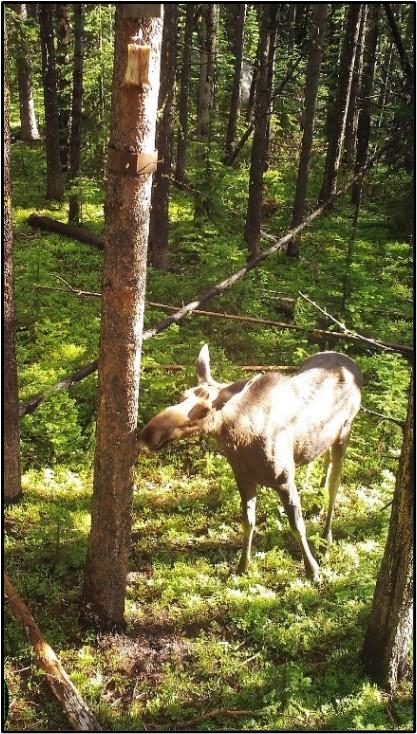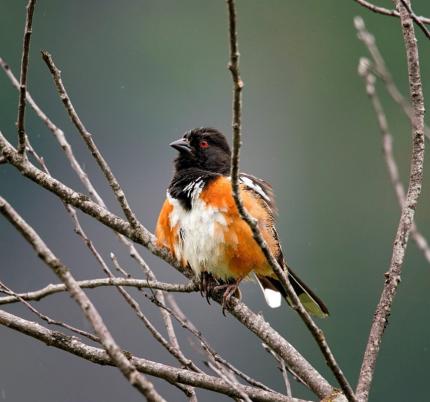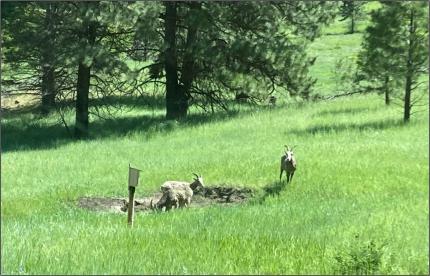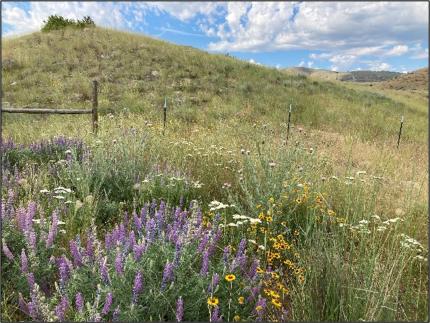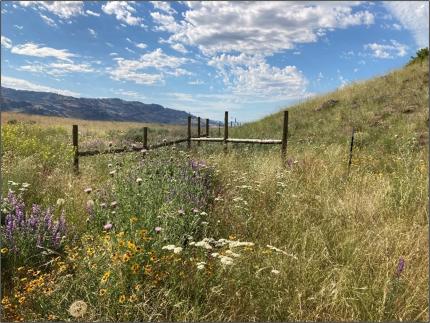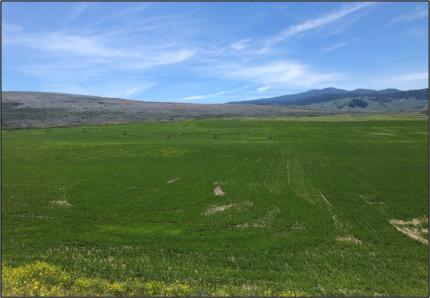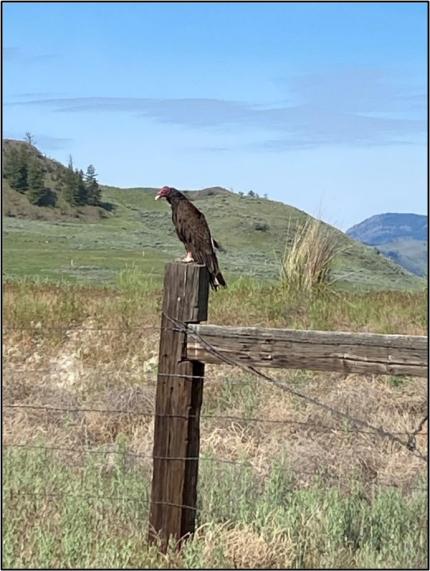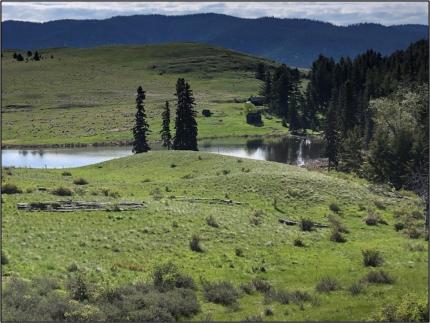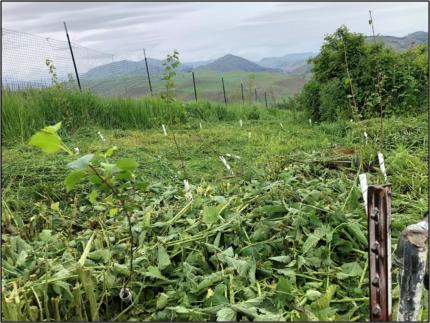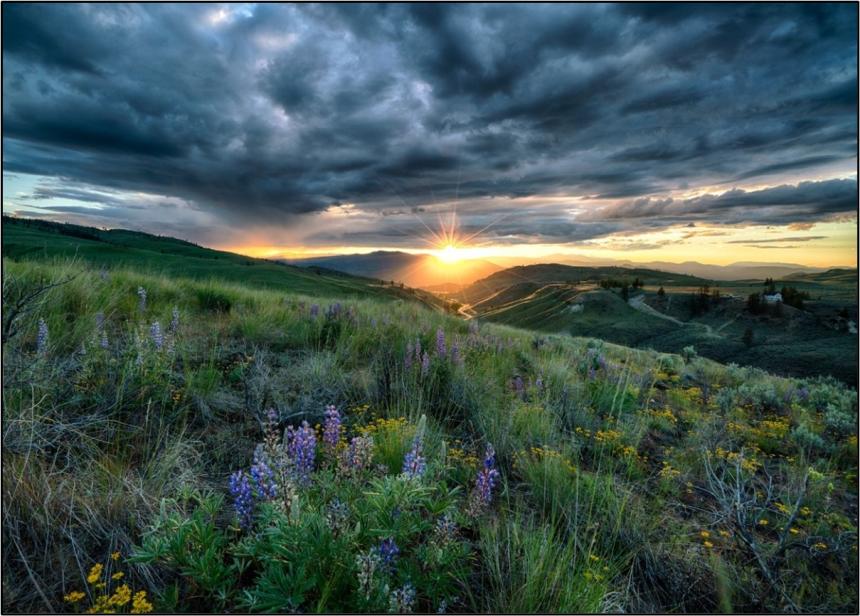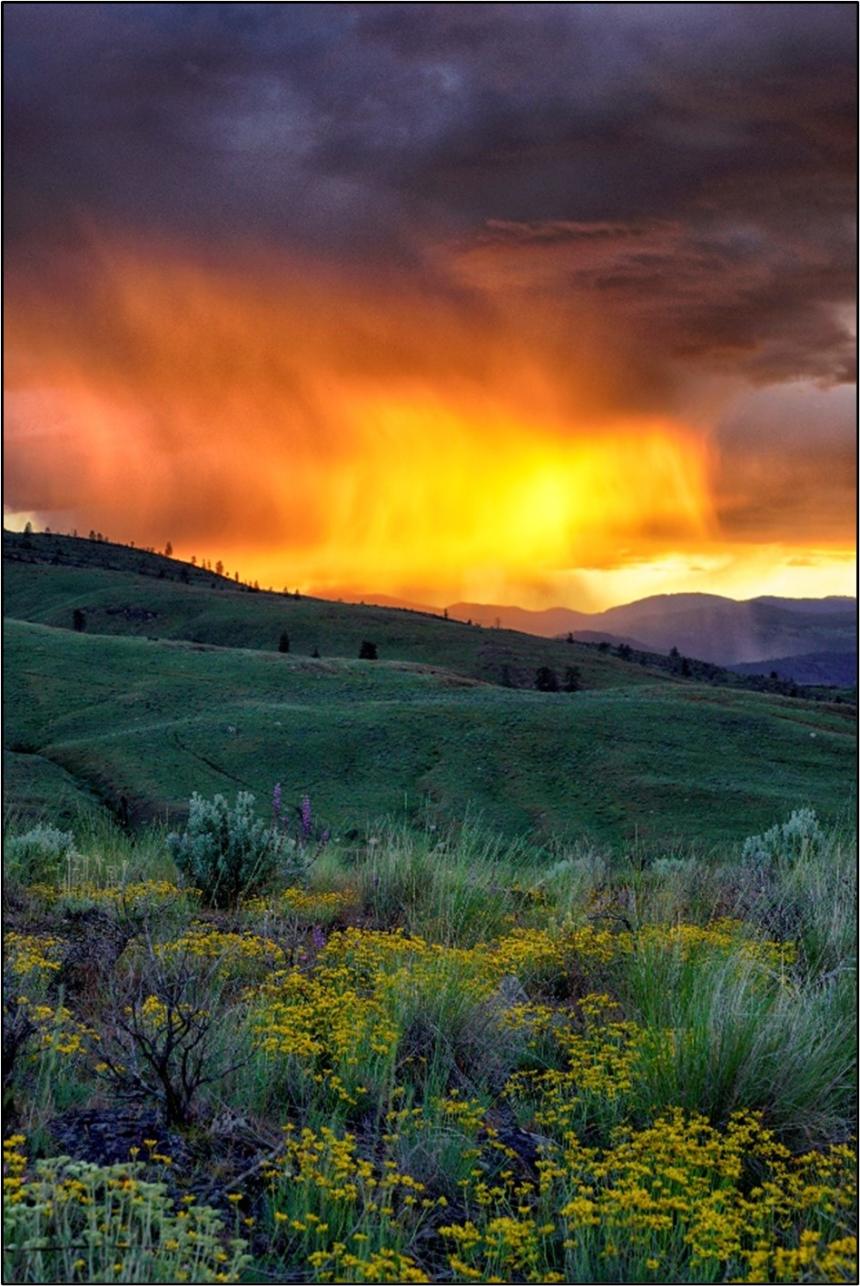Managing Wildlife Populations
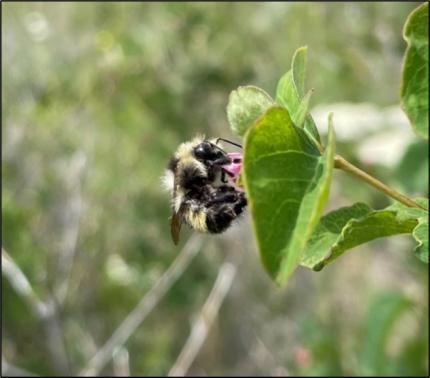
Bumble Bee Survey: Biologists Jeffreys and Eilers and Scientific Technician Pavelchek completed bumble bee surveys in two more Chelan County grid cells, one in the Mills Canyon area of the Swakane Wildlife Unit and one near Fish Lake. Fortunately, there were plenty of bees to be caught, and biologists captured 20 bumble bees, including at least six species, at the Mills Canyon survey site, and 28 bees, of at least three species, at the Fish Lake site. Habitat data were collected for each grid including identifying and photographing flowering plant (food source) species. The increased bee species diversity encountered at Mills Canyon may in part have reflected the greater diversity of flowering plants available at this site.
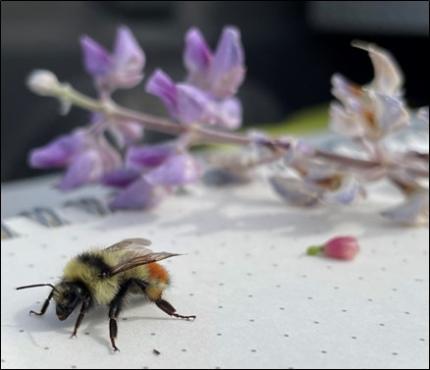
The data collected from this survey were entered into the Pacific Northwest (PNW) Bumble Bee Atlas online database. The PNW Bumble Bee Atlas is a collaborative effort between Washington Department of Fish and Wildlife (WDFW), Idaho Department of Fish and Game, Oregon Department of Fish and Wildlife, and the Xerces Society for Invertebrate Conservation to track and conserve the bumble bees of Washington, Idaho, and Oregon.
Biologist Heinlen conducted bumble bee surveys within District 6. These surveys address bumble bee distribution, health, and habitat needs across Washington.
They note any detections of the three Species of Greatest Conservation Need: the Morrison’s, western, and Suckley cuckoo bumble bee. Biologist Heinlen did detect the western bumble bee. More information about WDFW Species of Greatest Conservation Need can be found here in the State Wildlife Action Plan (SWAP) | Washington Department of Fish & Wildlife
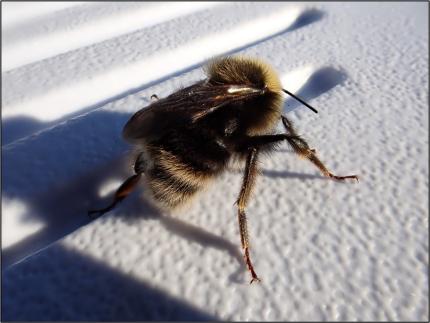
Bat Monitoring: Biologists conducted emergence counts at three more known bat colonies in Chelan County: a barn on Entiat River Road, Lake Chelan State Park housing, and a United States Forest Service warehouse near Lake Wenatchee. The Entiat and Lake Chelan sites have been monitored the previous two summers, and counts were down this year. However, chattering was heard in the roof of the house at Lake Chelan State Park even after the exit appeared to be over, and much chattering was heard in the warehouse by Lake Wenatchee, as well. As these are maternity roosts, this suggests pups here may not be volant (able to fly) yet, which could be the reason for the smaller numbers of bats seen exiting this year. Although counts were conducted in the same time frame as last summer, it’s possible that this year’s cool, wet spring and early summer may have delayed parturition. Biologists will return to these sites in early August to determine whether numbers of exiting bats have increased as one would expect when pups are able to fly. The Entiat barn hosts a colony of big brown bats (Eptescus fuscus), while it appears that the warehouse by Lake Wenatchee hosts a multi species colony like that occupying Lake Chelan State Park housing, a mix of little brown myotis (Myotis lucifugus) and Yuma myotis (Myotis yumanensis).
Ptarmigan: Research Scientist Schroeder and Biologist Heinlen spent two days in the Pasayten Wilderness monitoring the Mount Rainier white-tailed ptarmigan (Lagopus leucura rainierensis). We documented several ptarmigans including one hen with three chicks, three previously banded males (one that is five years old, two that are three years old), and we banded a female. A remote camera was placed to monitor ptarmigan use of snow fields, as has been done over the past couple of years. This work informs management of ptarmigan in Washington which are currently proposed for federal listing. Information about the life history, habitat needs, and status of this subspecies of Ptarmigan can be found here at the United States Fish and Wildlife Services Species Status Assessment.
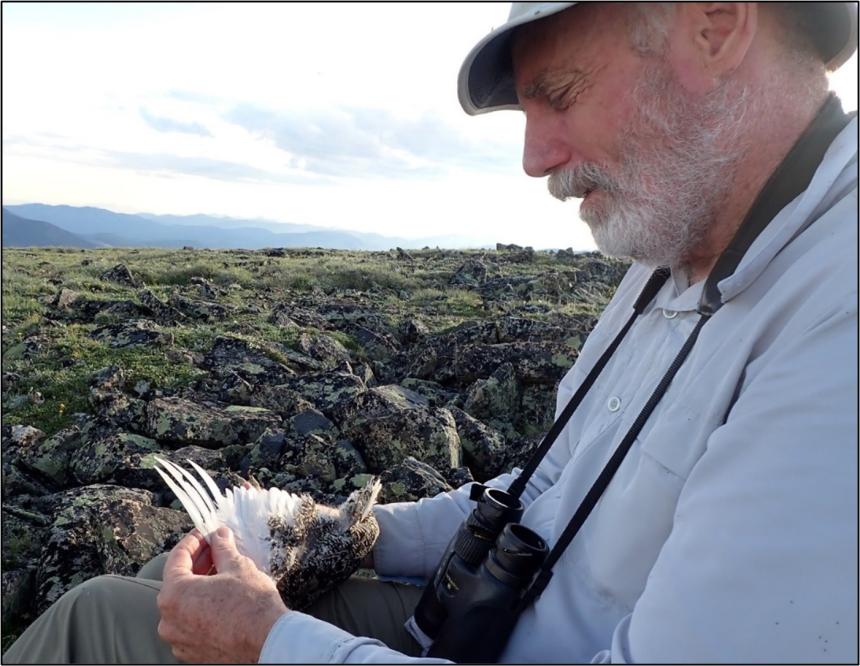
Washington Wolverine Survey: The Washington wolverine survey is part of a western multi-state effort to determine current baseline distribution, occupancy, and genetic characteristics of wolverines. The survey consists of setting up remote cameras in the fall with an automated dispenser that releases scent throughout the survey and gun brushes to passively collect hair for genetic analysis. Biologist Heinlen and Volunteer Fischer pulled sets near Windy Peak and Thunder Mountain in District 6. Even though no wolverines were detected at these two sites several other species including other rare carnivores were detected, including lynx, wolf, and fisher. You can find out more about this project at Western States Wolverine Conservation Project: results of the Washington Wolverine Survey, Winter 2016-2017 | Washington Department of Fish & Wildlife.
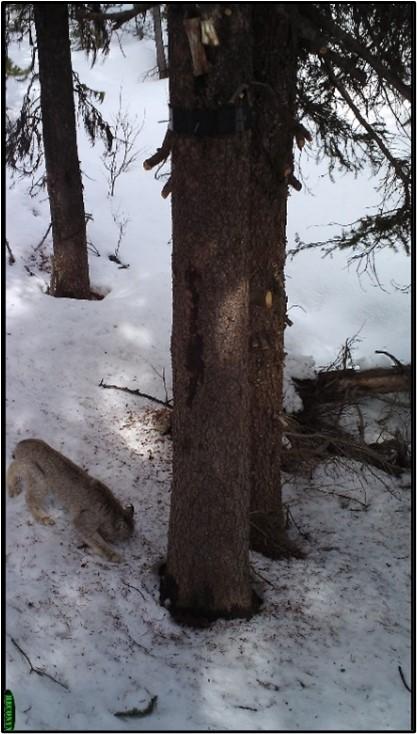
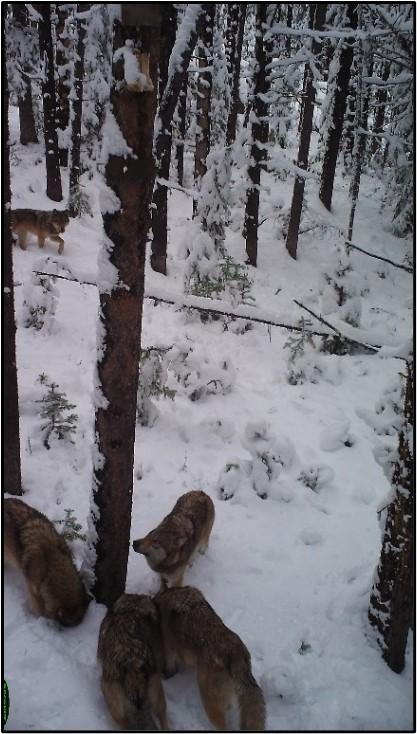
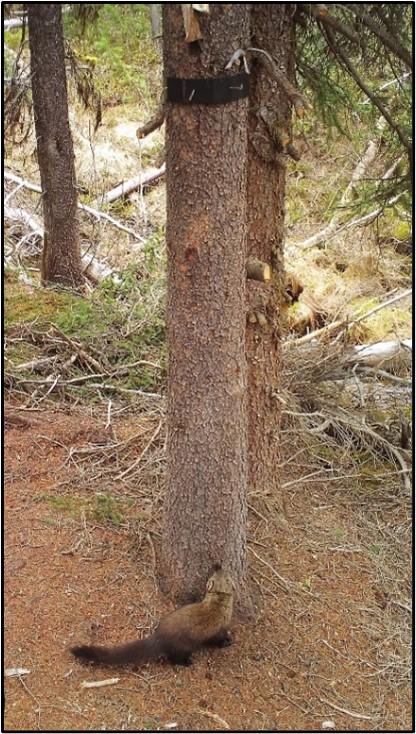
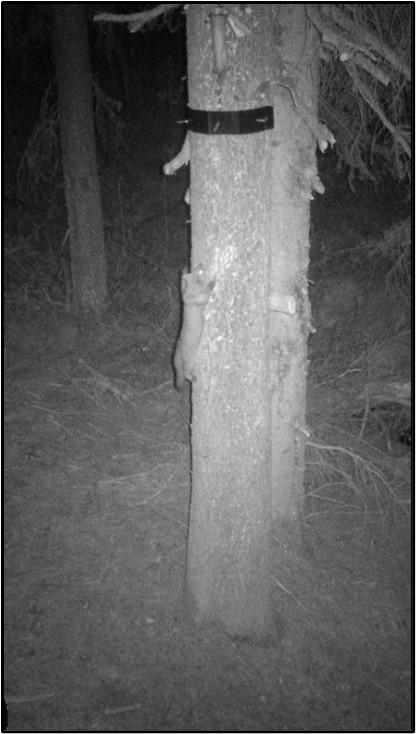
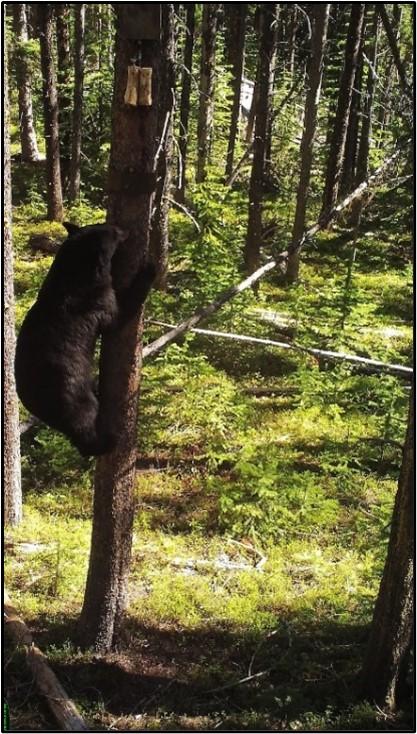
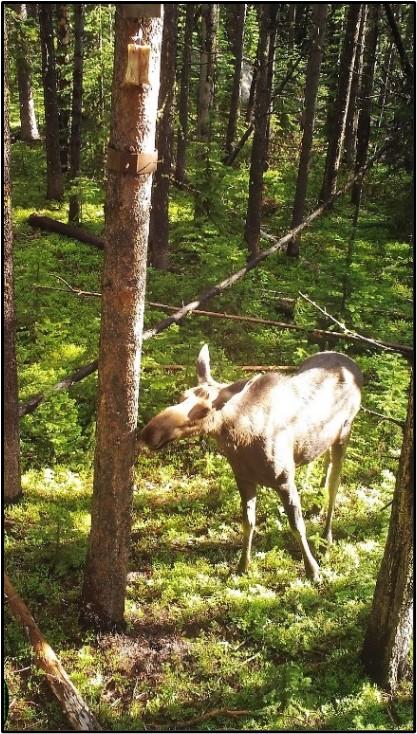
Providing Recreation Opportunities
Sinlahekin Campground Renovations: Sinlahekin staff members finished up the campground upgrades by installing gravel on some of the access roads to the campgrounds that were in much need of repair, along with adding gravel to many of the camping pads at the various campgrounds. Staff members also installed parking bumpers and gravel around the picnic tables that were installed at some of the sites. This has been part of the Recreation and Conservation (ROC) campground renovations grant. Many of these sites are used regularly and are a big hit with campers. We have received many thanks from the public on the upgrades.
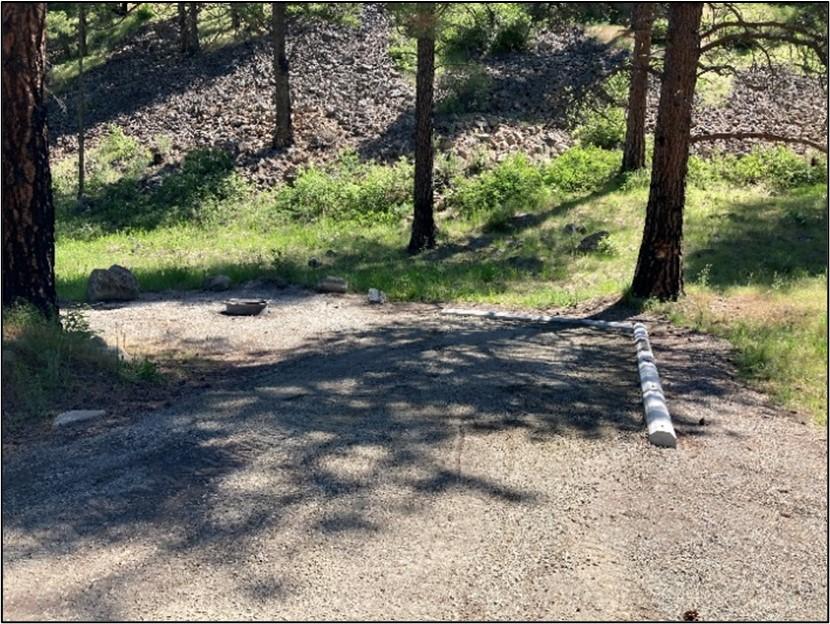
Providing Conflict Prevention and Education
Range Riding: Specialist Heilhecker met with a rancher to sign a new damage prevention cooperative agreement. The agreement cost-shares range riding activity in the Beaver Creek territory.
Deer and Elk Exclusion Fencing: Specialist Heilhecker continues to work on ordering fencing materials for signed cost-share fencing agreements. Prices for steel T-posts and woven wire from the vendor on state contract are unreasonably high so she is getting bids for fencing materials to justify purchasing off-contract. The wood posts were delivered to a central location in Okanogan County. The vendor will arrange to have the wood posts delivered to each landowner’s property.
Elk Damage: Specialist Heilhecker received a call regarding elk damage. The landowner stated he hazes the elk each evening, by riding his motorcycle and chasing the elk until they go back onto national forest. He also provided three links to YouTube videos of elk and elk signs on their property. There is an active damage prevention cooperative agreement for the property. Specialist Heilhecker issued him a landowner kill permit.
Osprey Young Recovery: Specialist Heilhecker spoke to a landowner who found an osprey nest on the ground. The landowner stated the pin feathers on the three young were mostly gone. His neighbor found a list of rehabilitators on the WDFW website. They found a rehabilitation facility willing to take the osprey and will drive the birds to the westside of the state.
Reducing Deer and Elk Damage to Crops: Specialist Bridges continues to work with a multitude of landowners in assisting with attempts to decrease damage from deer and elk.
Preventing Dangerous Wildlife Encounters: Specialist Bridges has spent a considerable amount of time working with the City of Leavenworth and various non-governmental organizations (NGO) to begin reducing a major wildlife attractant, garbage cans at the school. Funding continues to be challenging, but Bridges is working with NGO partners to secure needed resources. Specialist Bridges met with the Leavenworth’s public director to discuss fencing designs, permitting, and fencing functionality of design for compatibility with garbage pickup trucks.
Sheep and Goat Fencing Project: Specialist Bridges has been working the last five months to address domestic and big horned sheep disease concerns by working with a private landowner, Wild Sheep Foundation, and the Asotin County Conservation District. Fencing work to keep domestic sheep from interacting with wild sheep began on the July 25 and should take three to four weeks to complete.
Conserving Natural Landscapes
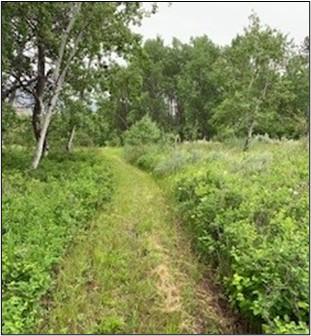
Unauthorized Trail Mowing on Methow Wildlife Area: Assistant Manager Repp confirmed the illegal mowing and contacted Officer Day. His investigation revealed that a neighboring landowner had been doing the mowing. Officer Day contacted the landowner. Coincidently the landowner is in the process of selling part of his property and the real estate company is advertising the unauthorized trails.
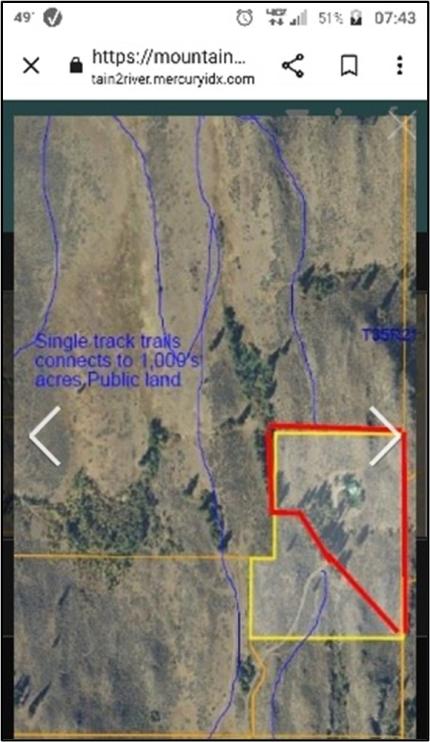
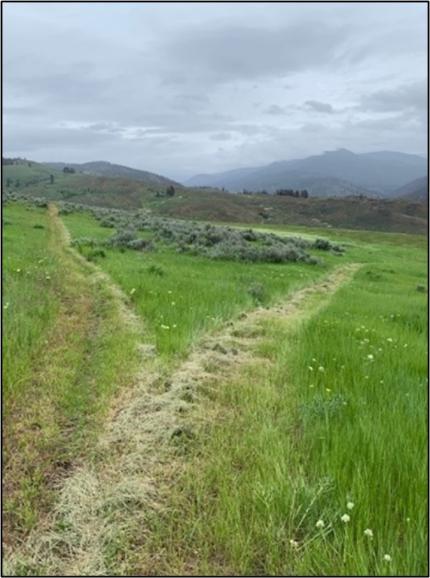
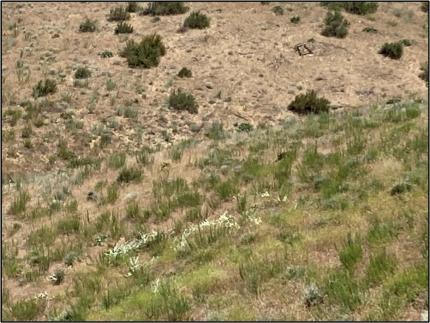
Sinlahekin Wildlife Area Noxious Weeds: Sinlahekin staff members have been treating noxious weeds on the Chiliwist Unit. They have been using a variety of methods to treat the weeds from herbicide to hand pulling. This continued treatment has made a noticeable change in the amount of Scotch thistle on the unit. Staff members will continue to treat the Scotch thistle throughout the summer. Some of the plants have started to bolt, staff members will be clipping seed heads and spraying rosettes.
Scotch Creek Wildlife Area Noxious Weeds: Staff members started their annual control efforts of musk thistle on the Chesaw Unit. The infestation is widespread across the unit with plants in varying stages of maturity. Control efforts are currently focused on the south slopes at the lower elevations. Staff members also spot treated annual and perennial weeds in a native grass seeding planted in 2015. The seeding was mowed last fall to prep for the spot treatment.
Methow Wildlife Area Noxious Weeds: Staff members spot treated 26 acres for houndstongue primarily in the Rendezvous Unit. They will continue treatments in June weather permitting. They received a complaint that someone had been mowing miles of unauthorized trails in the Little Cub area of the Rendezvous Unit.
Scotch Creek Riparian Restoration Project: Staff trimmed the grass around most of the newly planted shrubs in the project area. Trimming prevents the grasses from shading out the newly planted shrubs.
Habitat Plots: Biologist Cook applied herbicides to a failed irrigated food plot to prepare for planting again this summer. Cook applied herbicides on another habitat site to control weeds prior to planting this fall with native grasses. The herbicide appears to be working well.
Biologist Cook also visited food plots planted this spring. Two of the three plots are not growing well, and irrigation failures may be the primary factor. Low germination of a seed batch may be another factor because some species are growing better than others.
They also planted triticale in a wildlife food plot that had poor establishment earlier in the year. Wildlife food plots provide standing forage in the fall and winter that can help support a wide variety of wildlife, including big game, small game and upland birds, and non-game birds and small mammals.
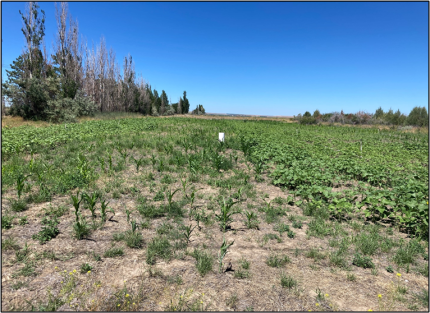
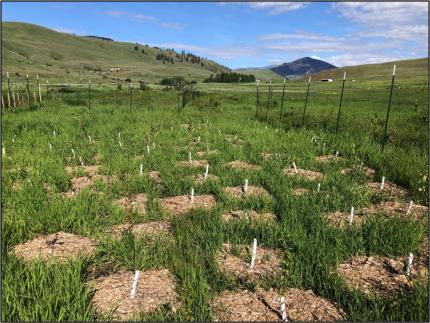
Okanogan Lands 20/20 Project Submittals: Okanogan Lands Operations Manager Haug submitted five applications for acquisitions in Okanogan County. The projects protect critical shrub-steppe and riparian habitats and increase recreation opportunity in the area. The applications will be reviewed later this month and then presented to staff members in Olympia for approval.
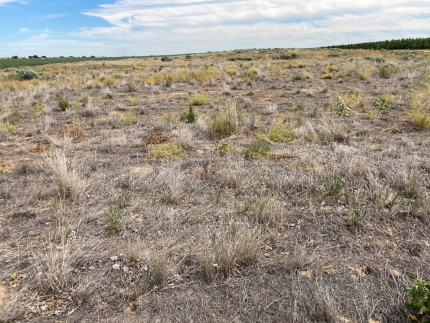
Habitat Project Maintenance: Private Lands Biologist Braaten mowed around trees and shrubs on the Rice Alling project site.
Douglas County Wildfire: Private Lands Biologist Braaten was called by landowners about wildfire in Ragged Butte area in Douglas County. It was put out by fire fighters after it burned around 500 acres. This area was very ruffed and rocky but was adjacent to critical habitat for sage grouse and State Acres for Wildlife Enhancement (SAFE) Conservation Reserve Program (CRP) fields.
SAFE-CRP: Private Lands Biologist Braaten met in person and called several landowners who have showed interest in signing up into SAFE. Douglas County Farm Service Agency (FSA) is waiting to find out if there are any acres available for SAFE and asked Biologist Braaten to let landowners know there may be an opportunity and to call and get on list.
In Douglas County, Wildlife Programs Biologist Morris worked on a conservation plan for SAFE-CRP that is being re-enrolled this year. This included assessing the existing vegetation in the landowner’s fields for wildlife habitat value, determining if changes need to be made to the enrolled fields, and planning what implementation and management actions need to be done to maintain high wildlife value on the field. This work will directly benefit wildlife by keeping agricultural land in high quality native vegetation that provides forage, cover, and pollinator habitat that supports a more healthy and diverse wildlife population.
Providing Education and Outreach
WDFW Staff Member Tour with Methow Conservancy: Methow Wildlife Area Staff Troyer, Repp, and Wottlin, along with Prescribed Burn Lead Eberlein and Lands Operations Manager Haug, met with the Methow Conservancy to tour forest health treatments in the Ramsey Creek area. The tour consisted of conservancy staff members, Womens Army Auxiliary Corps (WAAC) members and interested citizens who wanted to learn more about prescribed burning and forest health. Also helping on the tour was University of Washington Research Scientist Pritchard who provided technical knowledge regarding fire ecology. WDFW staff members provided information on fuels treatments, prescribed burn info and an overview of agency interest in forest health. Reviews of the tour were very positive with participants expressing how much they learned over the half day adventure.
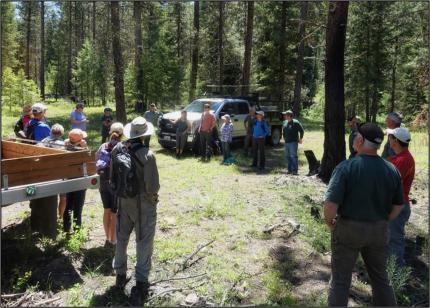
Douglas County Waiver Listening Session: Congresswoman Schier hosted a listening session in Marysville to discuss a CRP waiver issue. Private Lands Biologist Braaten contacted a few landowners to be participants, offer support, and discuss. One landowner attended.
Responding to Hunters Questions: Specialist Bridges has been responding to numerous calls from successful special permit holders for the Peshastin and Malaga hunts.
Conducting Business Operations and Policy
Sinlahekin Assistant Manager Onboarding: Assistant Manager Riley completed his training to get his wildland red card certification. The next step to get his full certification is completing the pack test which he has scheduled. All staff members on the Sinlahekin will be red card certified and ready for the wildland fire season. Hopefully they won’t need to use their training this year.
Pheasants Forever Meeting: Biologist Cook and Morris attended parts of the local chapter of Pheasants Forever to discuss potential collaboration and field work WDFW might do with some habitat improvement projects. Cook had the opportunity to meet with a Pheasants Forever Biologist to discuss further collaboration and assistance.
Private Lands Workshop: Private Lands Biologists Braaten, Morris, Cook and Rickel attended the Private Lands workshop in Ellensburg with staff members from around state. They met to receive training and discuss issues related to the Private Lands program. Biologist Morris and Cook gave a presentation and led a discussion on using GIS for Private Lands, Biologist Braaten led a discussion on New Techniques/tools/equipment/herbicide and other biologists gave presentations/discussions on various topics including seed mixes, equipment to use, etc. The discussions were very beneficial for sharing ideas and learning.
Other
